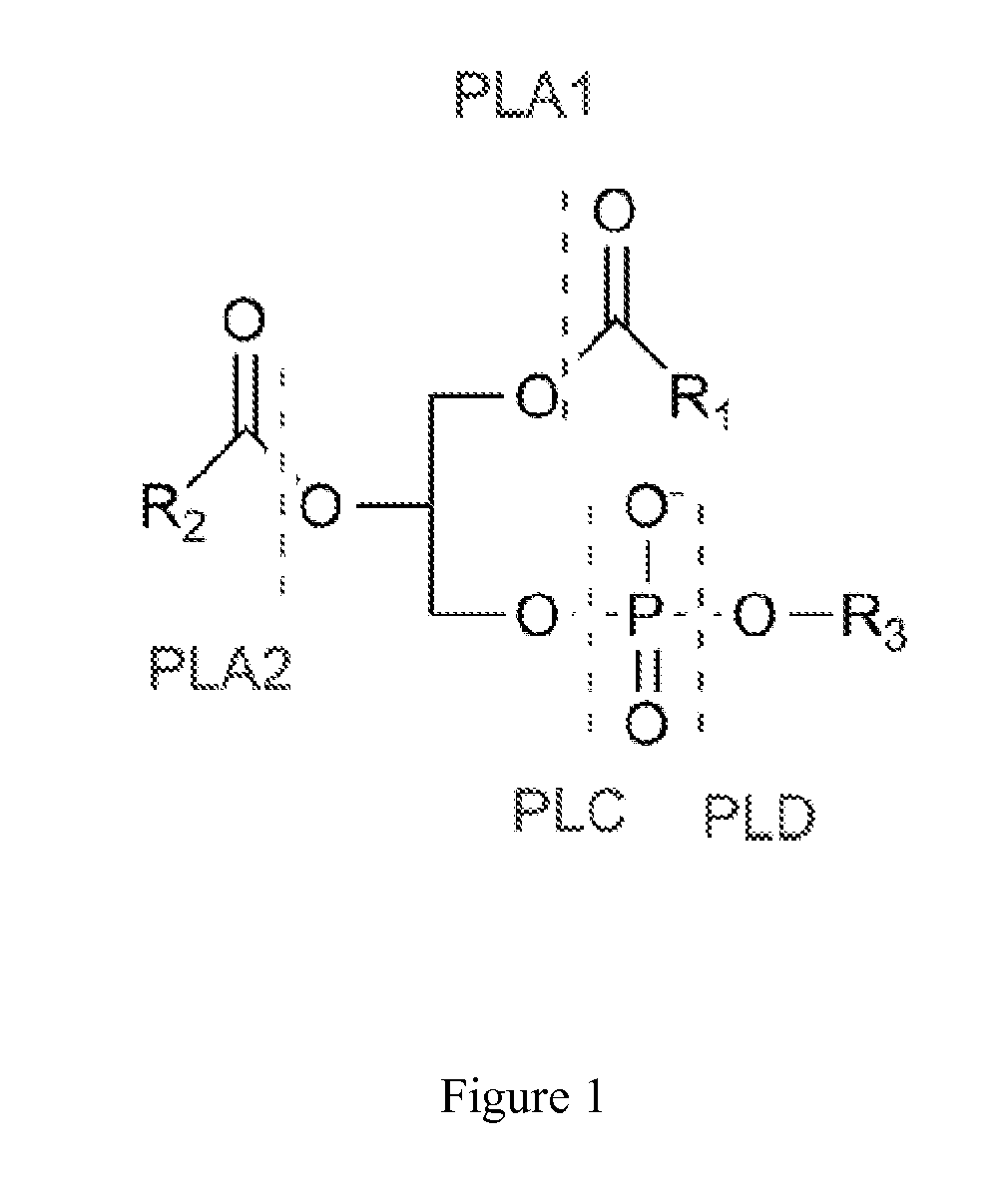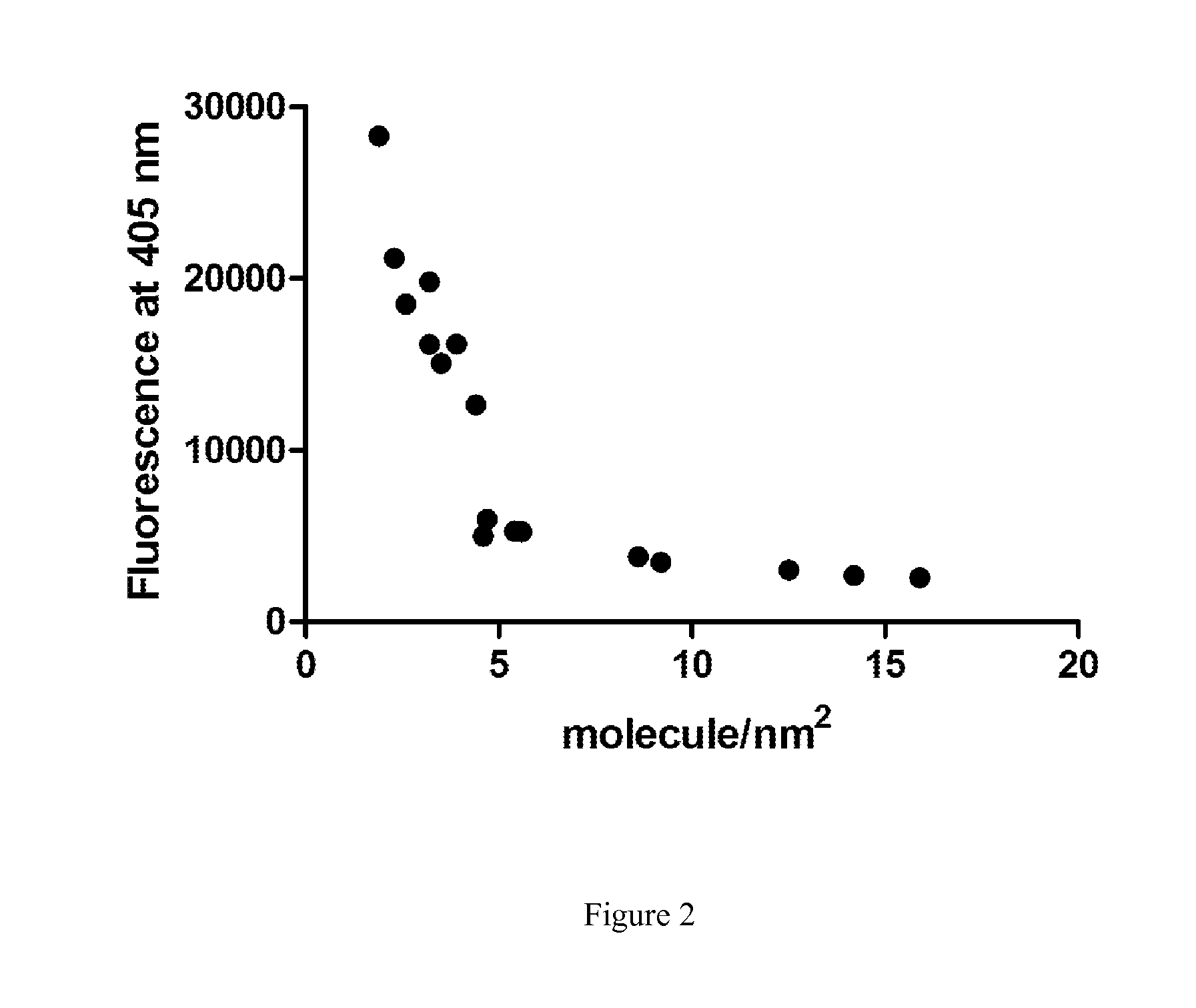Enzymatic Assay for the Quantitative Determination of Phospholipase A1 or A2 Activity in a Sample
a phospholipase and quantitative determination technology, applied in the direction of microbiological testing/measurement, measuring devices, instruments, etc., can solve the problems of large limitations of assay formats, laborious assays, and time-consuming post-reaction analyses
- Summary
- Abstract
- Description
- Claims
- Application Information
AI Technical Summary
Benefits of technology
Problems solved by technology
Method used
Image
Examples
examples
1—Preparation of Phospholipid-Coated Solid Phases According to the Method of the Invention
Material and Reagents
[0197]β-py-C10-phosphoglycerol (β-py-C10-PG) was from Molecular Probes / Invitrogen. Ø 4.15 μm polystyrene microspheres (beads) were purchased from Merck / Estapor. 96 wells plates were purchased from Nunc. All other reagents were from Sigma-Aldricht.
Experimental Protocol
[0198]All the steps were performed in glassware, with no direct exposure to light.
[0199]β-py-C10-phosphoglycerol was solubilized using sonication in 10% methanol / 90% Chloroform (v / v) in glass. The exact molarity of the β-py-C10-phosphoglycerol was determined with the help of a standard curve by absorbance at 342 nm through a five points Standard Curve (1 / 100 and 1 / 1600 dilution in Methanol, Cascade Dilution, factor 2) prepared from the sonicated stock solution with the blank defined as 1 / 100 dilution of the 10% methanol / 90% Chloroform (v / v) solution in methanol.
[0200]10% bead suspension in methanol was prepared...
PUM
| Property | Measurement | Unit |
|---|---|---|
| temperature | aaaaa | aaaaa |
| temperature | aaaaa | aaaaa |
| temperature | aaaaa | aaaaa |
Abstract
Description
Claims
Application Information
 Login to View More
Login to View More - R&D
- Intellectual Property
- Life Sciences
- Materials
- Tech Scout
- Unparalleled Data Quality
- Higher Quality Content
- 60% Fewer Hallucinations
Browse by: Latest US Patents, China's latest patents, Technical Efficacy Thesaurus, Application Domain, Technology Topic, Popular Technical Reports.
© 2025 PatSnap. All rights reserved.Legal|Privacy policy|Modern Slavery Act Transparency Statement|Sitemap|About US| Contact US: help@patsnap.com



